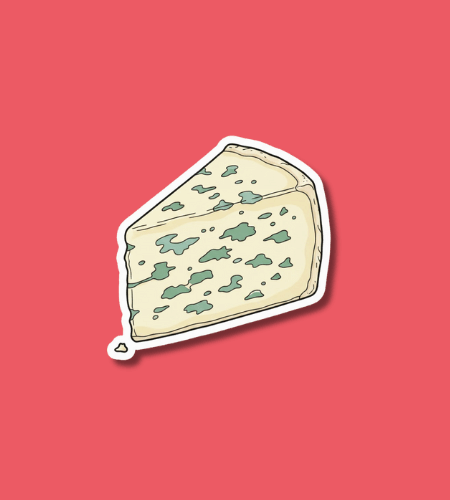National Moldy Cheese Day is observed every year on October 9. This quirky food holiday is a celebration of cheeses that use mold intentionally—think blue cheese, Camembert, Roquefort—and an occasion to explore the strange, flavorful, sometimes pungent side of dairy.
Table of Contents
History of National Moldy Cheese Day
The exact origin of National Moldy Cheese Day is obscure. No individual or organization is definitively credited with founding it. The holiday appears to have emerged from foodie culture and novelty‑day calendars—as a fun occasion for cheese lovers to highlight mold‑ripened varieties.
Over time it has gained traction on social media, food blogs, and cheese‑centric sites, where enthusiasts use the day to share tasting notes, recipes, and cheese boards featuring moldy cheeses.
Why is National Moldy Cheese Day important?
At first glance it may seem whimsical, but National Moldy Cheese Day reminds us of the delicate art and science behind cheesemaking. Many beloved cheeses owe their character precisely to mold: specific strains of fungi break down fats and proteins, creating aromas, flavors, textures that would otherwise never emerge. Celebrating moldy cheeses draws attention to how microbial processes, fermentation, and aging transform a humble curd into gastronomic art.
Moreover, the day helps dispel misconceptions: that mold is always bad, or that any mold on food is dangerous. It encourages learning about which molds are safe (and even essential to flavor) versus those that are spoilage mold. For cheese producers, retailers, and enthusiasts, it’s a chance to promote lesser‑known varieties, share stories of regional cheeses, and deepen appreciation for this rich culinary tradition.
Here are a few reasons this day resonates:
- It highlights the craftsmanship and microbiology behind mold‑ripened cheeses
- It encourages trying new, sometimes “daring” cheeses
- It promotes culinary education about safe vs unsafe molds
- It supports small cheesemakers and specialty cheese shops
- It offers a fun and sensory way to engage food lovers
How to Observe National Moldy Cheese Day
You don’t need to be a cheese connoisseur to join in. Start by assembling a tasting board featuring moldy cheeses you or your local shop enjoy—or even ones you’ve never tried before (within reason). Include blue cheeses (e.g. Roquefort, Stilton, Gorgonzola), soft‑ripened ones with bloomy rinds (like Camembert or Brie), and contrast them with “non‑moldy” cheeses to see what difference mold makes in flavor. Pair with breads, fruits, nuts, honey, or wine/beer to create balance.
Another fun approach is to host a moldy cheese tasting among friends (or virtually). Ask each person to bring one cheese, share what they like or find challenging, and talk about textures and aromas. You could even invite a cheesemonger to speak or run a short demonstration (if available locally). Use this day to experiment with recipes that incorporate moldy cheeses—say, a blue cheese sauce, baked Camembert, or moldy cheese in pasta or risotto.
Here are some ideas you might try:
- Buy or borrow a few moldy cheeses and compare them side by side
- Ask your cheesemonger about local or rare moldy cheeses
- Host a tasting event or cheese party with friends
- Cook a dish that features moldy cheese (sauce, stuffed item, etc.)
- Share photos, tasting notes, or cheese stories on social media with #MoldyCheeseDay
National Moldy Cheese Day Dates Table
| Year | Date | Day |
|---|---|---|
| 2025 | October 9 | Thursday |
| 2026 | October 9 | Friday |
| 2027 | October 9 | Saturday |
| 2028 | October 9 | Monday |
| 2029 | October 9 | Tuesday |
Subscribe to our newsletter and never miss a holiday again!

